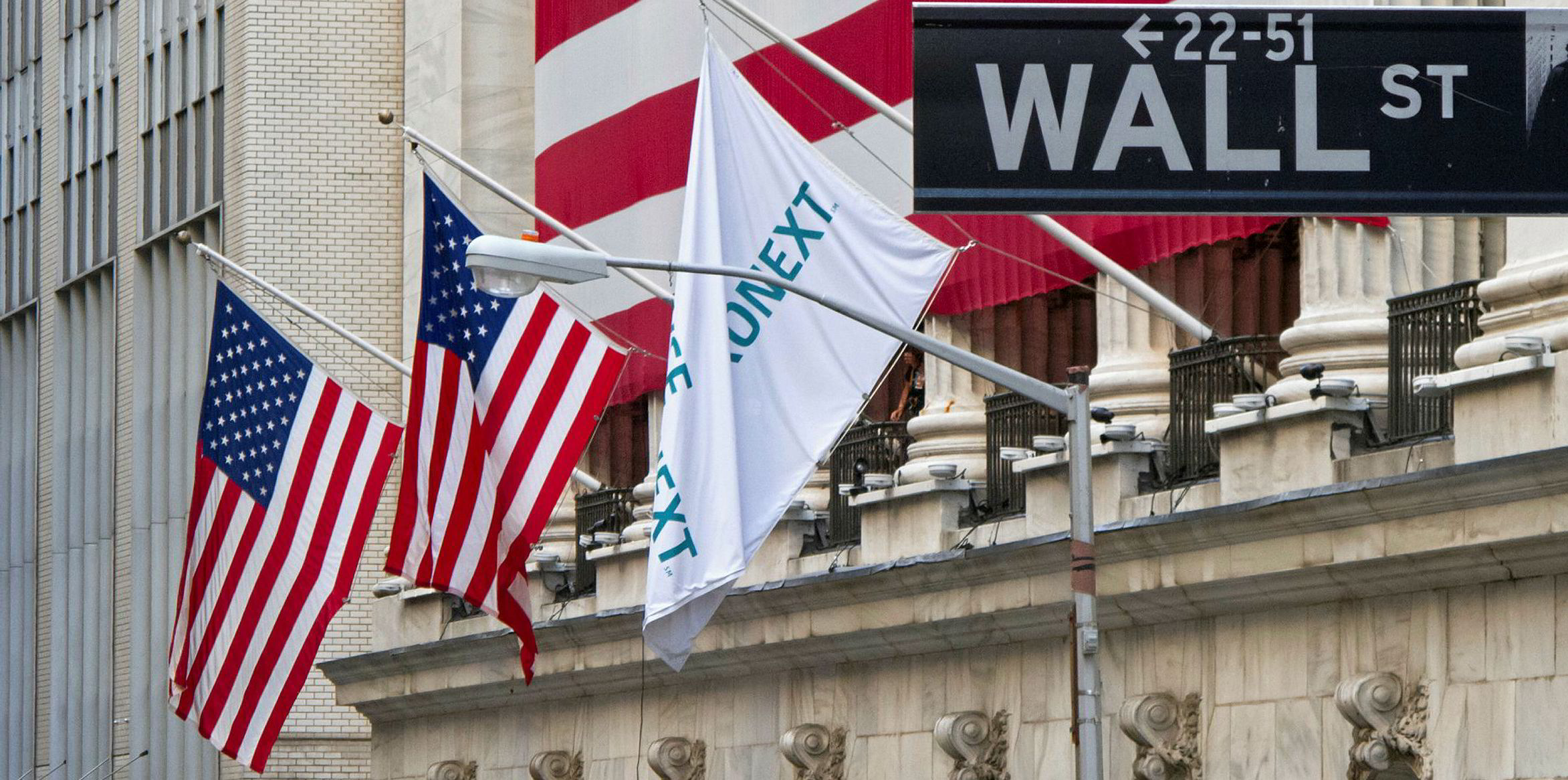The US stock market lost roughly 20% in the first quarter on coronavirus fears, its worst performance since the financial crisis of 2008.
But shipping stocks? They would happily take that 20% plunge and count their blessings. For they more than doubled the loss at an average 42% drop, according to US investment bank Jefferies.
It is a sad performance even for an industry that has become notorious for not giving investors what they want. Mainly, returns.
Why did shipping do so much worse than a historically bad broader market?
It is a mixture of things, said Jefferies lead shipping analyst Randy Giveans.
“Shipping stocks tend to have much higher [volatility] than the general market,” Giveans said.
“This was true in the good times, such as the tanker sector in the fourth quarter of last year, as well as the bad times,” Giveans said, referencing the first quarter of this year.
“There are multiple factors. Shipping tends to have high leverage, small market caps, less trading liquidity and certainly much more exposure to the global economy.
“The selling in February had no buying support as there was no appetite for China-exposed, energy-related, global trade-driven companies.”
As TradeWinds has reported, all 30 stocks under Giveans’ coverage lost money. Tankers lost 21.8% and they were the high achievers.
Containerships dropped 48.8%, dry bulk fell 52%, LPG plummeted 52% and LNG plunged 56.5%,
LNG player GasLog Partners turned in the worst performance, losing 84.4% of its share value. Dry bulk’s Navios Maritime Partners was next with a 70.7% drop, followed by Navigator Gas Holdings at 66.9%, Golar LNG Partners at 62% and GasLog at 61.7%.
These other prominent names lost at least half their share value:
• Dry bulk: Scorpio Bulkers (59.8%), Eagle Bulk Shipping (59.8%), Diana Shipping (52.4%), Star Bulk Carriers (51.9%).
• Containerships: Danaos Corp (56.4%).
• Clean products: Scorpio Tankers (51.2%).
The losses left tankers trading at 81% of their net asset value overall. They had been trading at an average of 112% of NAV in early January.
Owners with at least some crude tankers in their fleets fared better at 89%, compared to 115% in January. The two clean product carriers, Scorpio Tankers and Ardmore Shipping, averaged 63.5% (99%).
Bulker owners were trading at only 47% of their NAVs, down from 71% in January.
Three containership owners were at 46% (113%).
LNG carriers traded at 64% of NAV from 115% in January, while LPG carriers were at 30% (107%).
Hard to believe as it might be, the 47% figure is not the lowest bulkers have traded against NAV, Giveans said.
It is roughly where dry stocks traded at this point last year after the Vale dam collapse is Brazil, and it is stronger than their level in the first quarter of 2016, “when dry bulk was left for dead and multiple companies had to issue emergency secondary [shares] offerings to avoid bankruptcies”.
Giveans notes that bulker stocks bounced back in both the second half of 2016 and last year, suggesting, “this current sell-off could present an attractive buying opportunity”.
The analyst added one complicating factor to the comparisons: NAVs used by Jefferies and other analysts are likely “stale” at this point, he said.
Stocks tend to trade in fairly close correlation to hire rates, but private vessel values tend to lag one way or the other, he explained.
So in a rising rates climate (as tankers have been), price to NAV tends to look stronger than it actually is. In a falling market, such as bulkers, pricing to NAV looks weaker.
A second flaw is that future free cash flows are not “baked in” to the equation. So bulker valuations, for example, do not reflect that most owners in the sector are expected to lose money the next two quarters. Tanker values do not reflect expected strong cash flows in the next six months.
Giveans said Jefferies updates fleet values weekly, but projected cash flow only monthly.
“And as we’ve seen, a lot can change in a month,” Giveans said.








